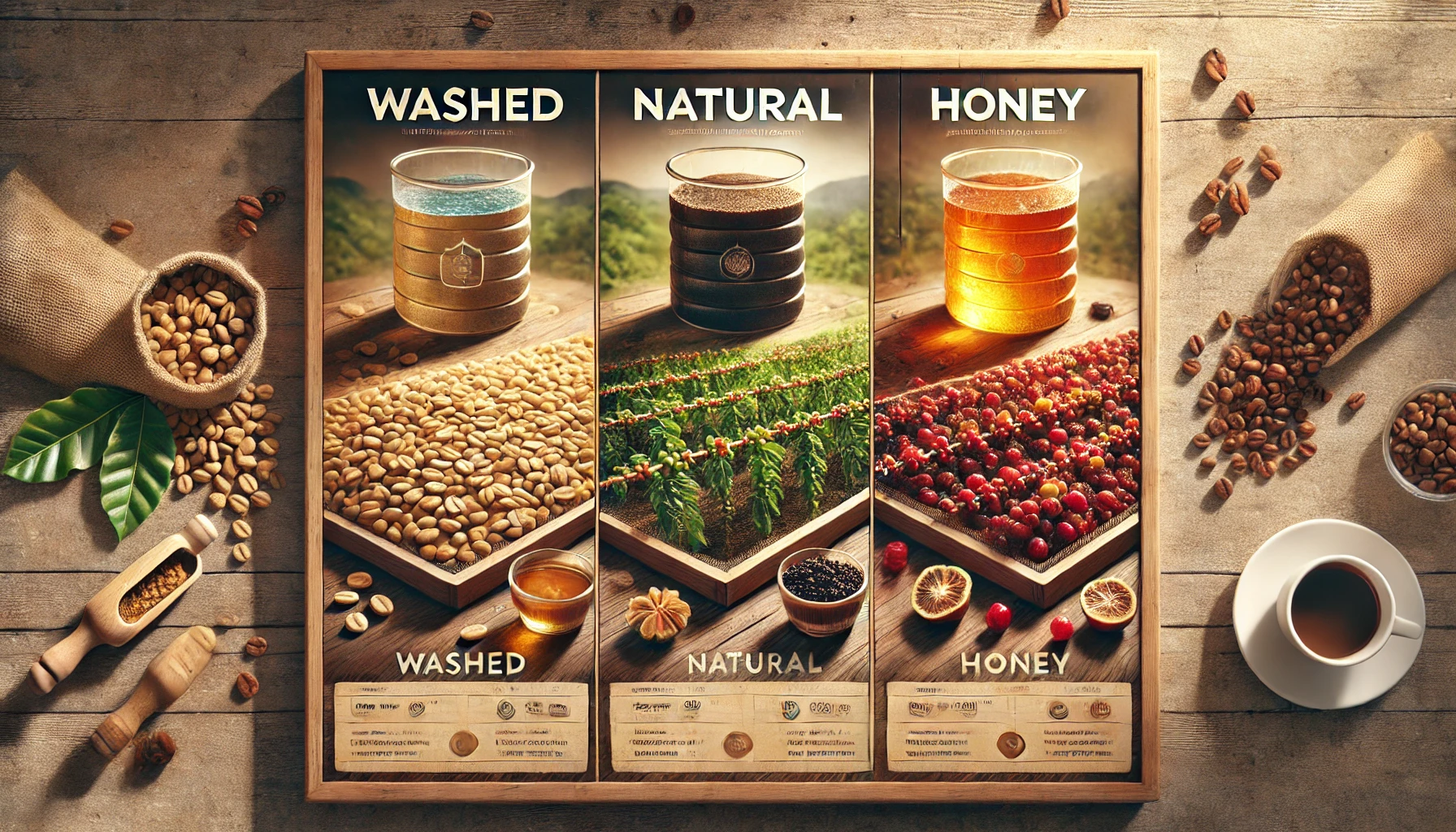When you pick up a bag of specialty coffee, you might notice terms like washed, natural, or honey printed alongside the origin and roast level. These aren’t just marketing buzzwords—they refer to the processing method used after the coffee cherries are harvested. And that method plays a major role in how your coffee tastes.
In this article, we’ll break down the three main coffee processing methods, how each one works, and how they affect the flavor in your cup—so you can make more informed choices based on your taste preferences.
Why Processing Matters
Coffee processing refers to how the fruit (cherry) is removed from the coffee bean (seed) before it’s dried and roasted. This step influences:
- The coffee’s acidity and body
- The clarity or complexity of flavor
- The potential for fermentation or sweetness
- The consistency of the final cup
The same coffee grown in the same region can taste completely different depending on how it’s processed.
1. Washed (Wet) Process
How It Works:
- Coffee cherries are de-pulped to remove the outer skin.
- Beans are fermented in water tanks to break down the sticky mucilage.
- After fermentation, they are washed with clean water.
- Beans are dried on patios or raised beds.
This is the most controlled and consistent method, commonly used in countries like Colombia, Kenya, and Ethiopia.
Flavor Profile:
- Clean, bright, and crisp
- Emphasizes acidity and origin characteristics
- Notes of citrus, floral, or tea-like complexity
Best For:
- Pour-over, Chemex, and manual brewing
- Coffee drinkers who enjoy clarity and nuanced flavors
2. Natural (Dry) Process
How It Works:
- Coffee cherries are left intact (skin, pulp, and mucilage).
- They are dried in the sun on raised beds or patios, often turned regularly.
- Once dried, the fruit is hulled off, and the beans are sorted.
This method is traditional in dry climates like Ethiopia and Brazil, where water is scarce.
Flavor Profile:
- Fruity, bold, and sweet
- Often has notes of berry, wine, or tropical fruits
- Can be less consistent due to fermentation risks
Best For:
- Espresso, French press, and adventurous coffee drinkers
- Those who enjoy big body and fruit-forward flavors
3. Honey Process (Pulped Natural)
This method is a hybrid between washed and natural. It’s especially popular in Costa Rica and Central America.
How It Works:
- Cherries are de-pulped, but some of the sticky mucilage is left on.
- Beans are dried with the mucilage still clinging to them.
- The name “honey” comes from the sticky texture—not from flavor or additives.
There are even variations:
- White honey: most mucilage removed, cleaner taste
- Yellow honey: medium amount of mucilage
- Red/Black honey: lots of mucilage, darker drying, fruitier results
Flavor Profile:
- Balanced body and sweetness
- More complex than washed, cleaner than natural
- Notes of stone fruits, honey, or mild spice
Best For:
- Espresso and filter brewing
- Coffee lovers looking for balance and complexity
Processing Comparison Chart
| Method | Acidity | Body | Flavor Notes | Consistency |
|---|---|---|---|---|
| Washed | High | Light-Medium | Citrus, floral, crisp | Very consistent |
| Natural | Low-Medium | Full | Berry, winey, fermented | Less consistent |
| Honey | Medium | Medium-Full | Stone fruit, caramel, sweet | Moderately consistent |
How to Choose Based on Taste
- Like bright, clean cups with floral or citrus notes? → Go for washed
- Prefer bold, sweet, fruity coffee with heavier body? → Try natural
- Looking for a balance between the two? → Choose honey processed
Experimenting with processing methods is one of the best ways to explore how origin and preparation influence taste.
Final Thoughts: The Hidden Step That Shapes Your Cup
Coffee processing might happen far from where you brew, but it’s one of the most influential factors in flavor. Whether you enjoy light and tea-like brews or rich, syrupy espresso shots, understanding the differences between washed, natural, and honey-processed coffees helps you choose beans that suit your palate.
So next time you’re browsing for coffee, don’t just look at roast and origin—look at how it was processed. You might just discover a whole new layer of flavor to fall in love with.
